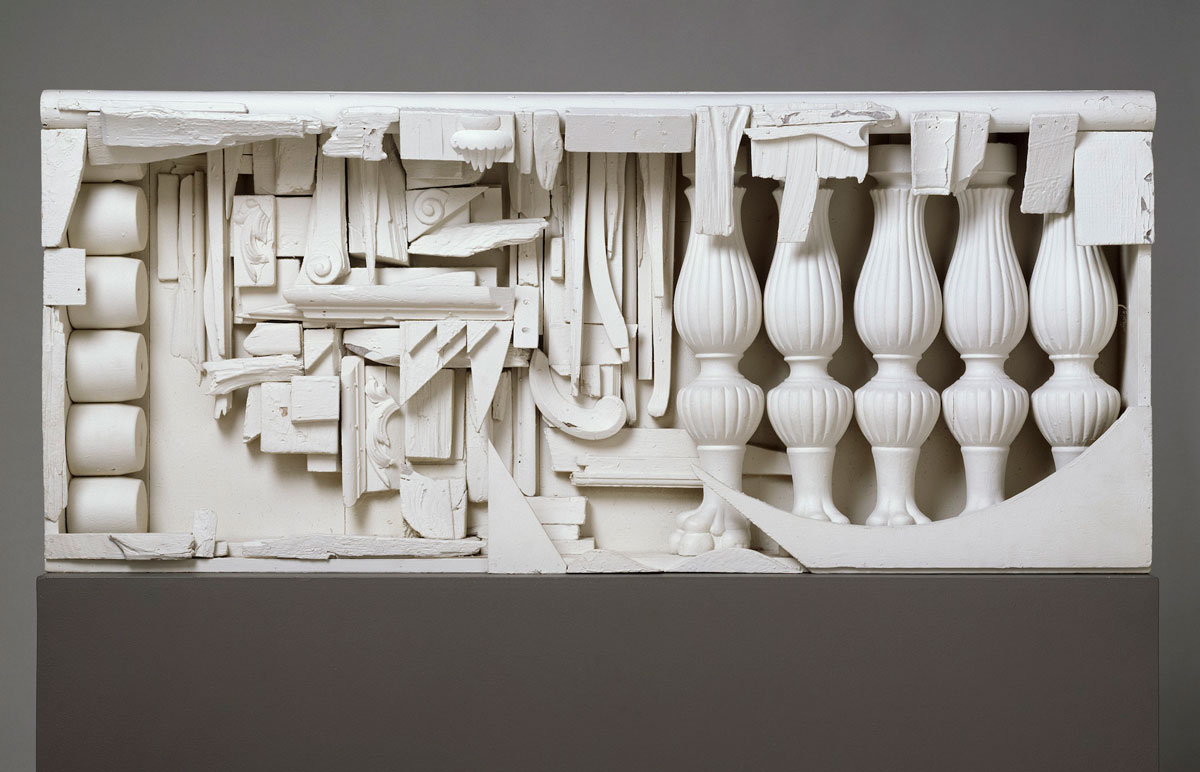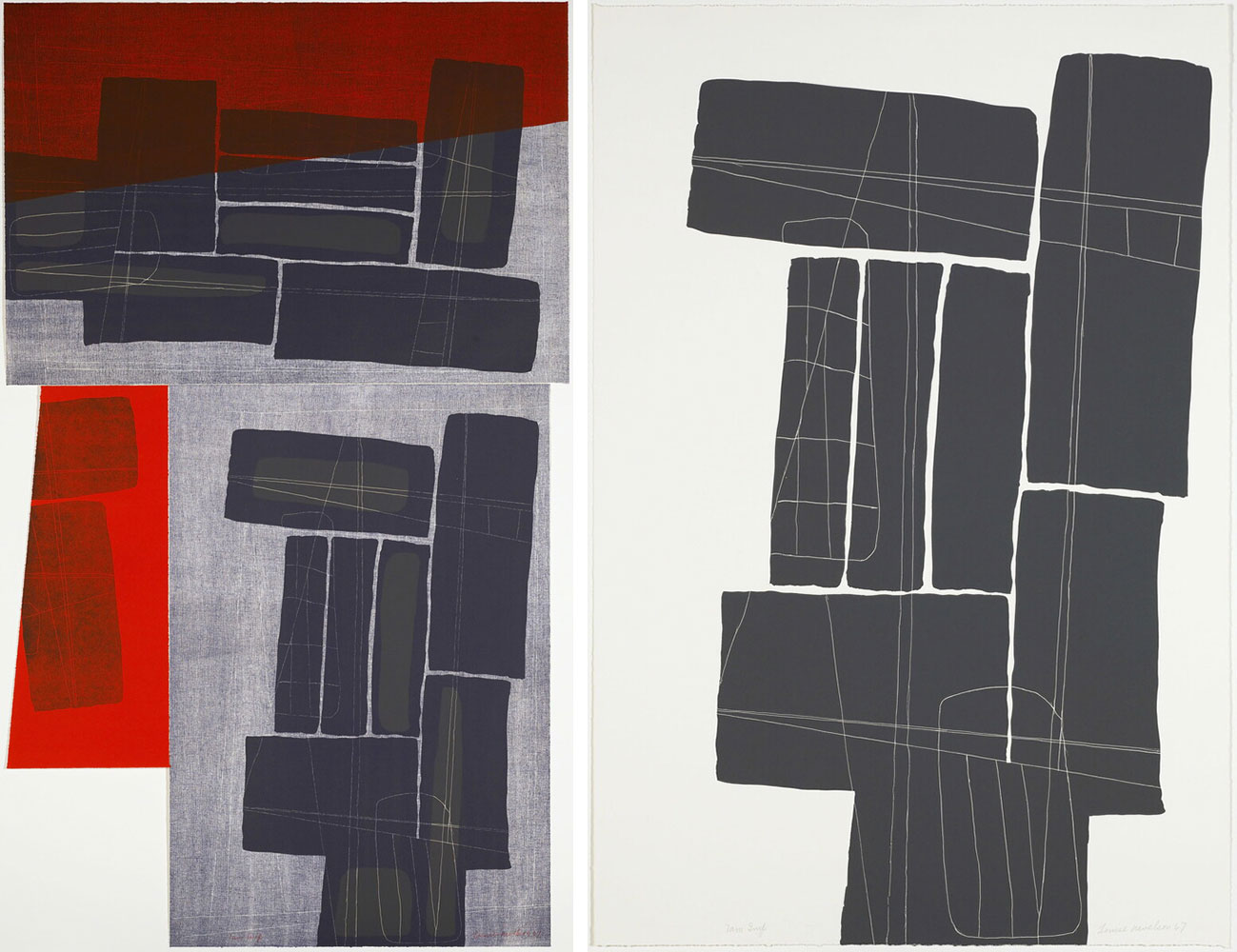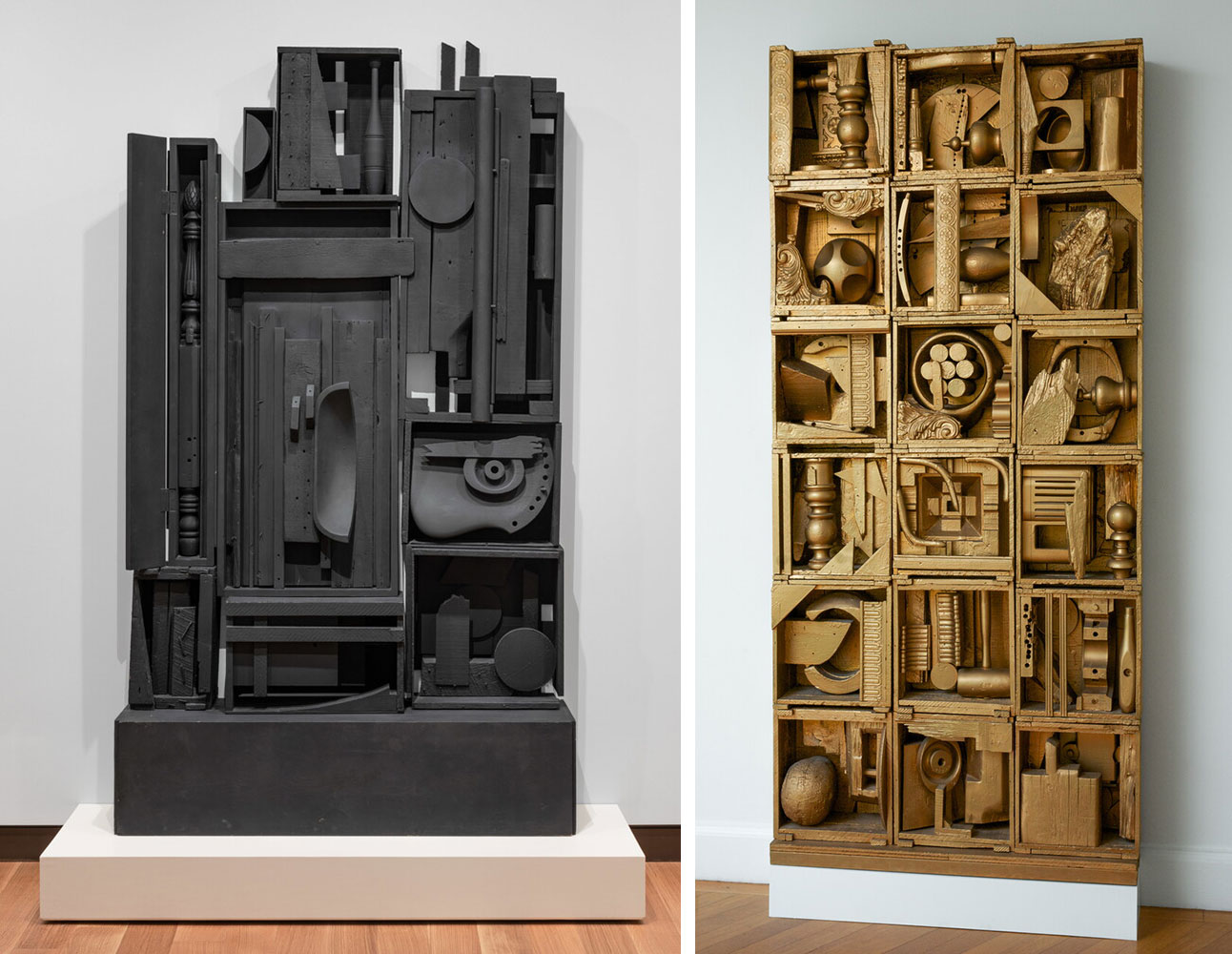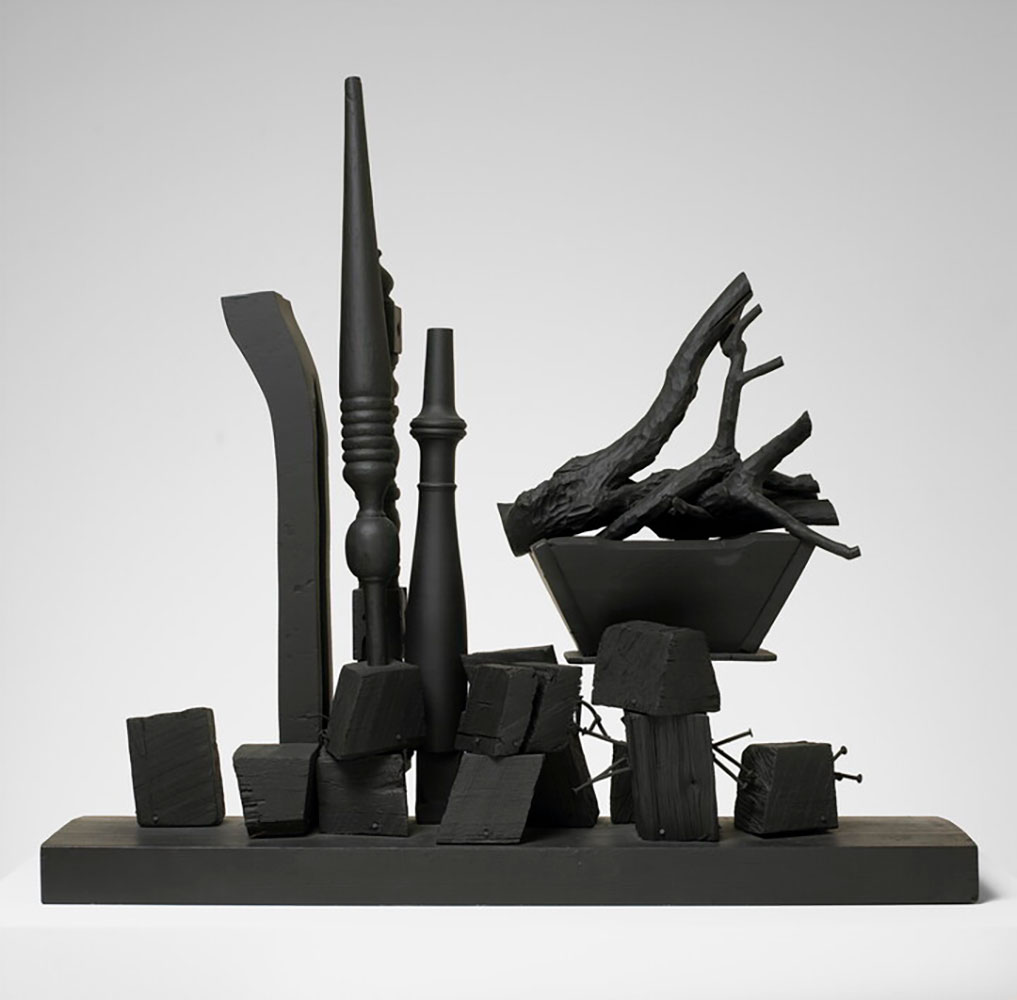PRESENTATION: The World Outside-Louise Nevelson at Midcentury
 Louise Nevelson was a towering figure in postwar American art, exerting great influence with her monumental installations, innovative sculpture made of found wood objects, and celebrated public art. She was recognized during her lifetime as one of Americas most distinguished artists, and her work continues to inspire contemporary sculptors today.
Louise Nevelson was a towering figure in postwar American art, exerting great influence with her monumental installations, innovative sculpture made of found wood objects, and celebrated public art. She was recognized during her lifetime as one of Americas most distinguished artists, and her work continues to inspire contemporary sculptors today.
By Efi Michalarou
Photo: the Carter Archive
One of the first exhibitions to explore Louise Nevelson’s midcentury sculptures and works on paper in dialogue with their historical moment, the exhibition “The World Outside: Louise Nevelson at Midcentury” illuminates Nevelson’s multidimensional mastery of form and attunement to postwar America culture. The Carter-organized exhibition features over 50 defining artworks by Nevelson on view together for the first time, including wall works, installations, and prints from across the country. These landmark artworks include “Lunar Landscape”, “Royal Tide I”, “Rain Forest Wall”, and “Transparent Sculpture I”. Divided into thematic sections that explore Nevelson’s identity as an artist, the exhibition allows Nevelson’s sculptures and works on paper to be viewed through the lens of the artistic and cultural landscape that shaped her vision and reaffirms her significance as an artist in postwar America. Nevelson scavenged wooden objects from New York City debris piles to create monumental relief constructions, which broke the taboo that only male artists could create large-scale sculptures. In this one, she incorporated disparate parts like a bedpost, juggling pin, and seat fragment, nailing and gluing them into boxes that reflect the influence of Cubism’s geometric abstraction of space and form. Believing that these found objects arranged in different configurations called to mind the moon’s surface, the sculptor painted everything black to unify the work and amplify its crater-like appearance. When Nevelson exhibited such pieces, she illuminated them in theatrical black light to give them a dramatic look as she wanted viewers to feel immersed within the objects’ environments. The lithographs featured on show created between 1963 and 1967 at the Tamarind Lithography Workshop in Los Angeles. Nevelson attacked printmaking with many of the same approaches she used to create her sculptures, including her interest in silhouetted forms and layered elements. She created textural effects by impressing materials such as lace and cheesecloth onto inked lithographic stones, producing dynamic, multiple-paneled constructions. While many elements of her lithographic prints are reminiscent of her sculptures, assemblages, and installations, they distinguish themselves completely from the monochromatic pieces by their vivid colors. This exhibition provides a unique glimpse into the experimentations of one of the foremost sculptors of the 20th century.
Photo: Louise Nevelson, Untitled, 1967, Lithograph, Printed by Serge Lozingot, 39 1/4 x 55 3/16 in., 20 artists edition, 9 Tamarind impressions, Recto: l.l. signed and dated in graphite: Tam Imp. Louise Nevelson 67, Verso: l.l. in graphite: Tam No 2157A German Etching Paper Tamarind Impression, l.r. in graphite: German Etching Paper 2157 & 2157A Right Tam No 2157, Amon Carter Museum of American Art, Fort Worth, Texas, Accession Number: 1967.258-259, © Estate of Louise Nevelson / Artists Rights Society (ARS), New York
Info: Amon Carter Museum of American Art (the Carter), 3501 Camp Bowie Blvd., Fort Worth, TX, USA, Duration: 27/8/2023-7/1/2024, Days & Hours: Tue-Wed & Fri-Sat 10:00-17:00, Thu 10:00-20:00, Sun 12:00-17:00, www.cartermuseum.org/


Right: Louise Nevelson, Untitled, 1967, 34 3/8 x 23 1/8 in., 10 artists edition, 9 Tamarind impressions, Inscriptions, Recto: l.l. in graphite: Tam Imp, l.r. signed in graphite: Louise Nevelson 67, Tamarind Lithography Workshop Collection, Amon Carter Museum of American Art, Fort Worth, Texas, Accession Number, © Estate of Louise Nevelson / Artists Rights Society (ARS), New York

Right: Louise Nevelson, Royal Tide I, 1960, painted wood, Peter and Beverly Lipman, Photo courtesy Storm King Art Center by Jerry L. Thompson, © 2022 Estate of Louise Nevelson / Artists Rights Society (ARS), New York

